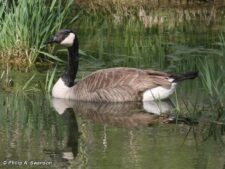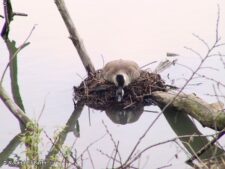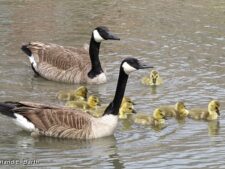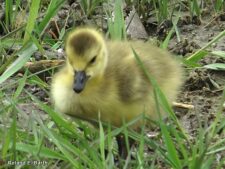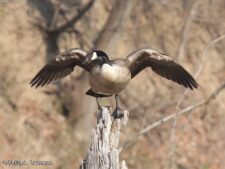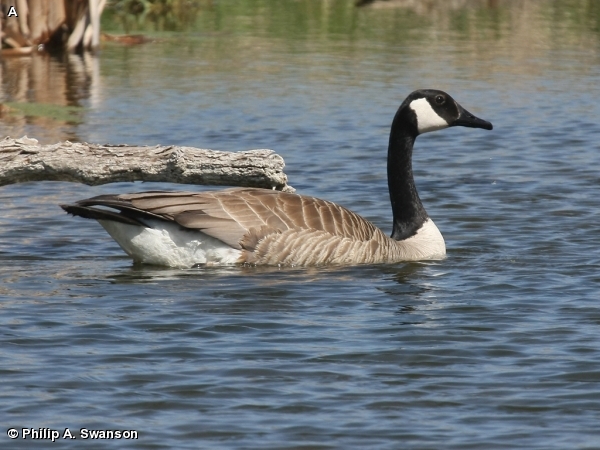
36 to 45 inches long with a wingspan of 53 to 60 inches. There is considerable size difference between sub-species of Canada Geese and some in our area can be significantly larger than the sizes listed above with some having a wingspan up to 75 inches. Sexes are alike. The Canada Goose is a long-necked Goose. The head slopes gently to the black bill. The head and neck are black with a broad white throat patch that extends up to the cheek. The base of the neck, upper back, and breast are rather variable, generally medium gray-brown to dark brown. The breast and belly are brownish-white. The central uppertail coverts and rump are black. The belly, vent, and undertail coverts are white with a black tail. The Cackling Goose was recently split from the Canada Goose. Refer to the description under the Cackling Goose for differences in these species.
The Canada Goose is a common breeder in the Forest. It is best seen in the Great Marsh and along Stream Trail. Although it may be seen at any time of the year if there is open water, it is usually seen from March through late October.
Twenty years ago the Canada Goose was uncommon in the Forest. With its recent population explosion, it is now common and a breeder in the Forest. The Canada Goose exhibits marked variation and has recently had the small Cackling Goose split from the main species. Breeders are monogamous, with life-long pair bonds formed usually during the second year. Offspring remain with their parents throughout the first year of life, traveling together in large flocks of family groups. It forages primarily on grasses, sedges, and berries. The voice is a resonant “hronk”.
Disclaimer: The content of NatureSearch is provided by dedicated volunteer Naturalists of Fontenelle Forest who strive to provide the most accurate information available. Contributors of the images retain their copyrights. The point of contact for this page is: Phil Swanson.

